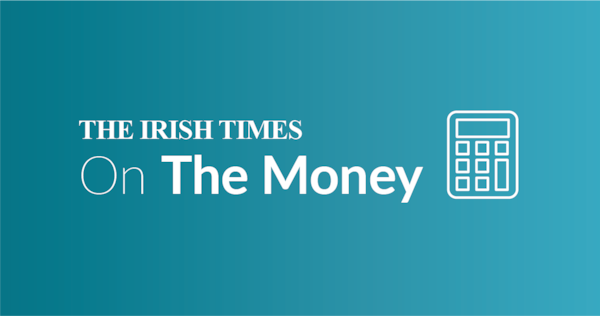High profile demands from a few big worldwide companies – and Trump’s US government in relation to federal employees– for staff to return to the office have led to headlines that the Covid era of remote working may be coming to an end. Decisions by the Workplace Relations Commission (WRC) here, meanwhile, have shown that employers have a strong hand if they want to refuse requests to work outside the office.
But let’s look at the evidence. Before the pandemic, in 2019, one fifth of the Irish workforce worked from home either some of the time or most of the time, according to the Central Statistics Office data. In recent quarters the figure has been around one third and figures out on Thursday confirm that this is holding, with those working from home some of the time, or most of the time, rising to 35 per cent, from 33.5 per cent the previous quarter.
[ What were the key workplace trends HR experts saw in 2024?Opens in new window ]
True, during the pandemic, the total rose to a high of 44 per cent in the lockdown in early 2021. But after a sharp fall thereafter it has remained pretty steady in recent quarters. The latest data shows around one fifth reporting that they “usually” work at home – defined as more than half the time at home in the previous four weeks – and another 15 per cent saying they “sometimes” work at home, a category which includes any work from home but would include everyone working two days a week in the office.
And remember that many employees in sectors like retail, healthcare, hospitality and education cannot work from home at all, or can do so very seldom, and hence the percentages of office workers doing so remains high. In terms of numbers, before the pandemic there were around 450,000 people working some or most of the time at home. Now there are over 970,000, a huge change in work patterns.
RM Block
Employers can choose to get employees back to the office – and will likely succeed if they follow the right legal procedures. But most office employers are sticking with the hybrid structure, for now at least, even if Ireland may be matching the international trend where there is a notable fall-off in completely remote working where the employee is not expected to come into the office at all. Data from employment website Irishjobs.ie shows that job postings mentioning hybrid working continued to hold up right through 2024, while the numbers offering fully remote roles fell sharply.
Clearly the move by big companies like Amazon and JP Morgan to get people back into the office full-time is being closely watched and there is a sense that the working model of the future has still to finally settle. A minority of companies – mainly multinationals – have decided to call employees back to the office full time, according to Jennifer Cashman, head of employment at lawyers RDJ, “but I don’t get the impression that there is a general move in that direction.” Most companies are sticking with a model which sees employees in the office two or three days a week, she said, and don’t see a reason to change.
Having being pushed into remote working during Covid, many firms are still trying to work out exactly how to do it best and how to manage issues like teamwork and collaboration. A rise in training for line managers in how to best manage hybrid teams is a sign that this kind of working model is here to stay, according to Cashman.
“Reports of the death of remote working are greatly exaggerated looking at the data”, according to Dr Laura Bambrick, head of social policy and employment affairs at the Irish Congress of Trade Unions. “The numbers are remarkably high, this far out of lockdown. Overall the number of people working hybrid – typically either two or three days in the office – is continuing to grow, she points out, even if most growth is in the category of people reporting they do “some work at home”. By far the biggest growth over the past year has been in women with hybrid working arrangements, possibly reflecting, says Bambrick, the overall growth in female participation in the workforce.
A recent international survey of almost 3,000 professionals and 530 companies by Morgan McKinley shows the popularity of the hybrid model, even if there is room for debate between employers and employees on how this operates. Around 45 per cent prefer working in the office one to two days per week, while 30 per cent prefer three to four days. Just nine per cent wanted to be in the office full time. Those working hybrid are generally happy with their arrangements, though there is clearly tension in some cases between a model which sees employees in the office three days – in other words a majority of the time – or one to two days.
There is some push back from employers internationally, with 24 per cent requiring employees to spend more time in the office than last year. In the Irish case, the evidence suggests that this is still within the context of hybrid arrangements. However, trends this year bear close watching on this issue, particularly if a slowing in the jobs market moves more power back to companies, who in recent years have been scrambling to hold on to staff in many areas. Even within office settings, according to Morgan McKinley, there is no “one size fits all” solution for different industries and job types. More than four out of ten employers in the survey said that flexible work patterns were key to attracting staff and, on the flip slide, lack of such options is often the reason why employees leave. SMEs, in particular, who may struggle to compete on remuneration packages can attract staff by offering more flexibility.

“Landing Google really put us on the map”: Karl Brophy on the success and sale of Red Flag
Employers and employees continue to negotiate what will and will not work for both sides. The initial issues that emerged during Covid remain – making sure everyone has a proper set-up at home and appropriate technology connections, managing tech security risks and being aware of potential isolation of members of the team. Measurement of productivity is notoriously difficult and hard to apply generally and research results are hard to generalise. Some does indicate issues with collaboration and ideas generation – a recent study by Stanford, on the other hand, based on a large online travel company, shows broadly positive results from hybrid working in particular. and that employees who work from home two days a week “are just as productive, likely to get promoted, and far less prone to quit.”
Research by Microsoft, meanwhile, shows that online meetings need to be managed, with a 252 per cent increase in time spend on their Teams tool since before the pandemic. It cautions that employee time needs to be managed, with evidence of the emergence of the “triple-peak” workday where, as well as the normal pre- and post-lunch work peaks, many employees are logging back on after around 8pm. Whether this is a result of flexibility or staff being unfairly pressurised is open to question.
And there are problems and disputes. Most of those which have gone to the WRC have found in favour of the employer. But there are workplace issues, too. Cashman points to the so-called “hidden hybrid” issue, where line managers have agreed deals with individual staff members which may go against company policy and cause problems. In many firms unravelling deals reached during Covid – in some cases involving staff relocating their home – can be complex.
And measuring productivity when staff are remote proves difficult for some firms, with the research advice being to focus on outputs rather than metrics such as time logged in. Wells Fargo, the US bank, fired around a dozen staff last summer for so-called “ mouse-jiggling” – moving their mouse around periodically to appear busy when in fact they are not.
So there is some settling here still to do. But all the signs are that hybrid working is here to stay.














